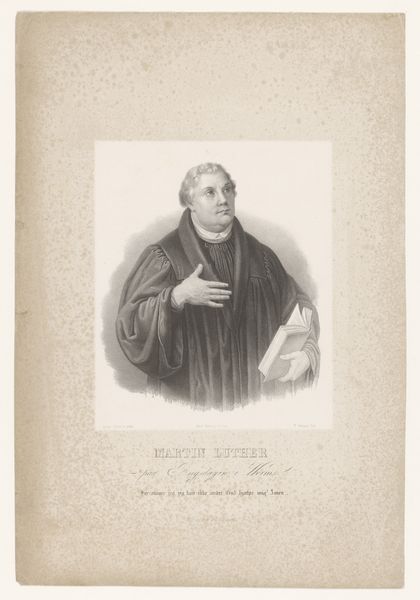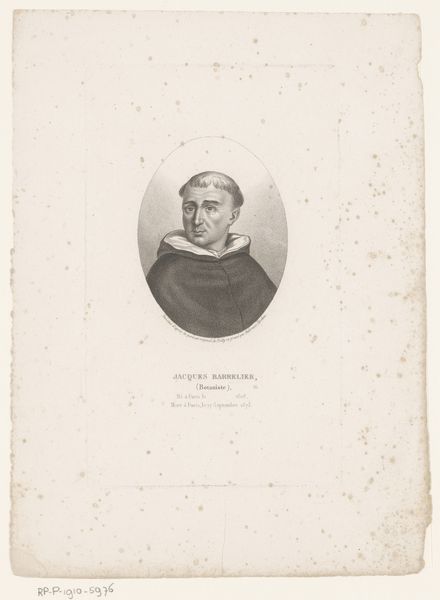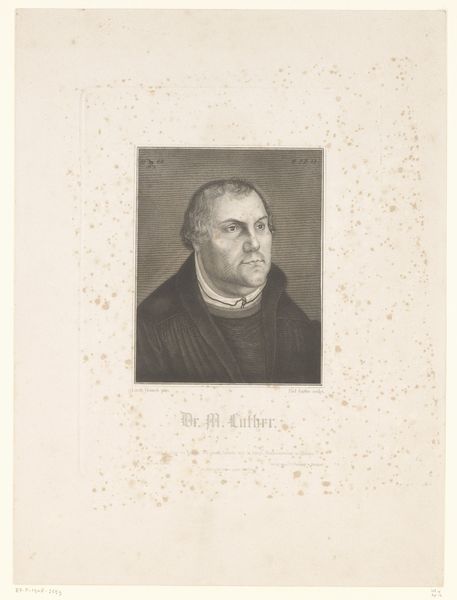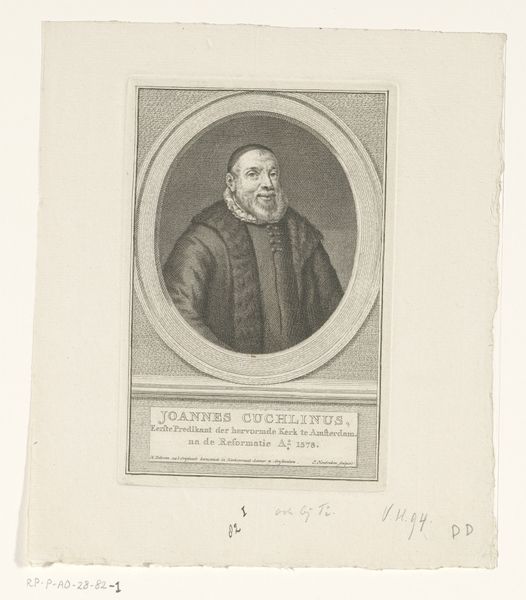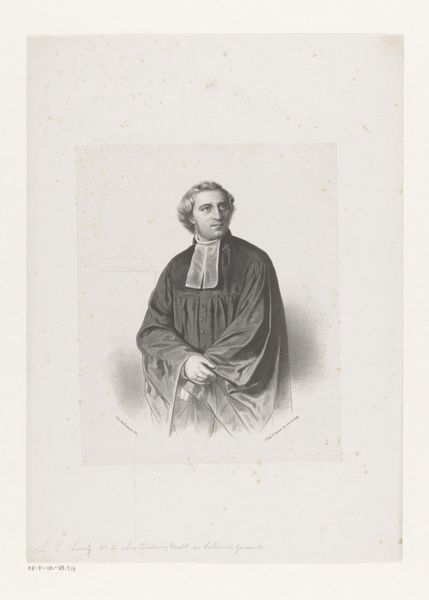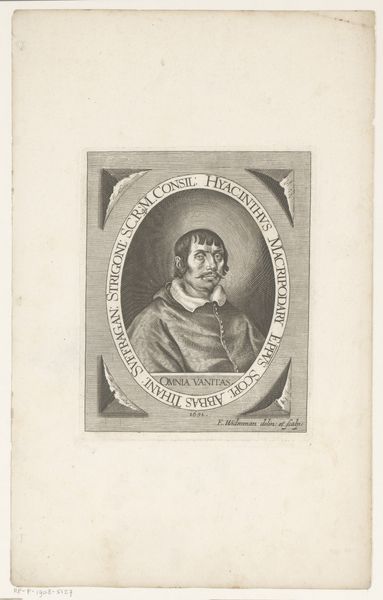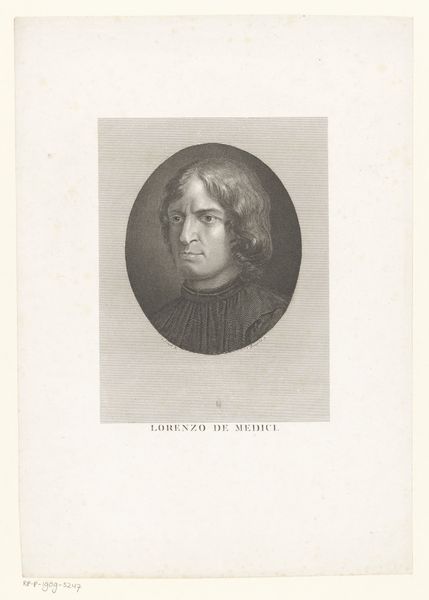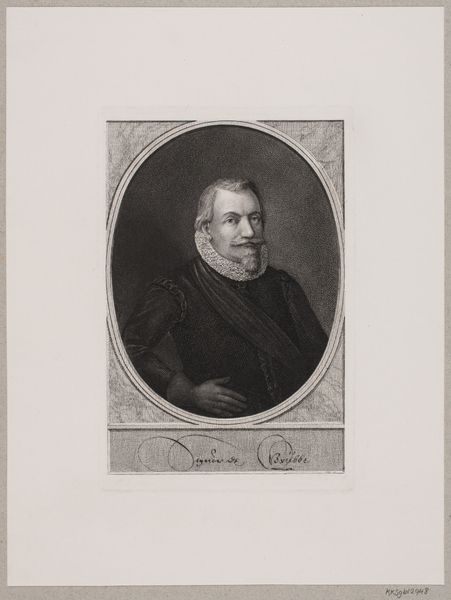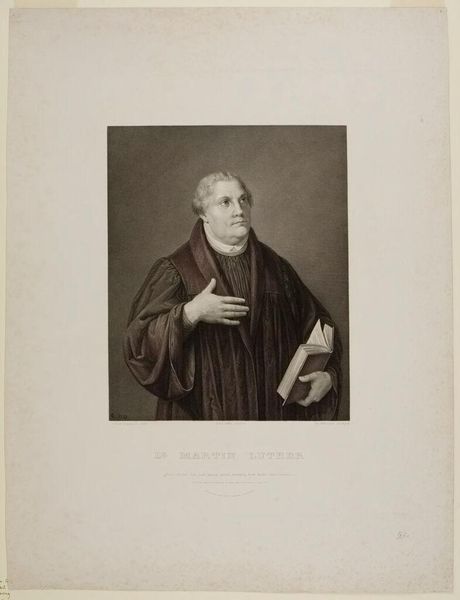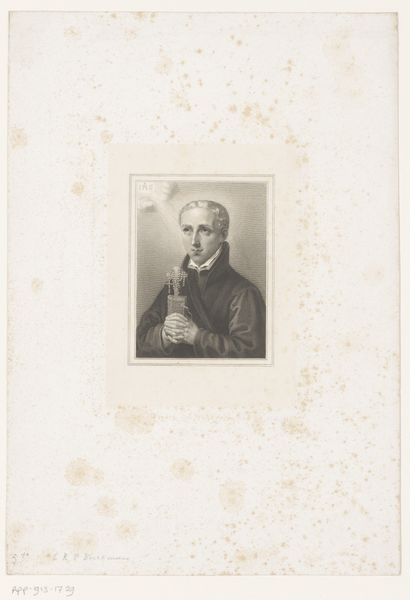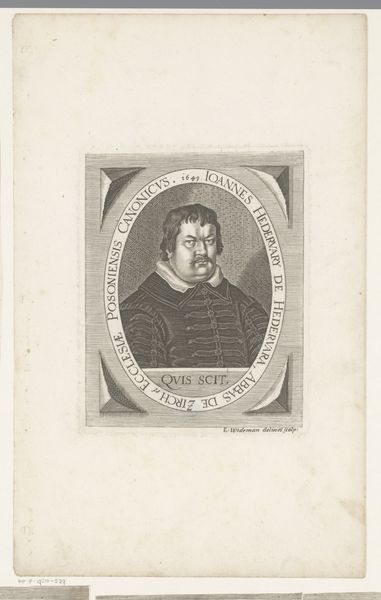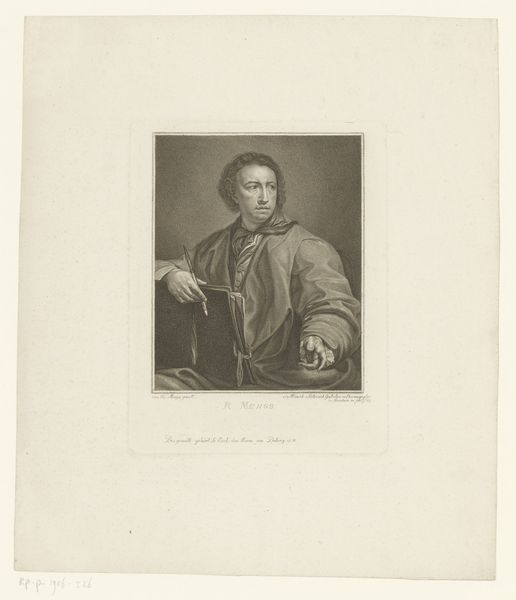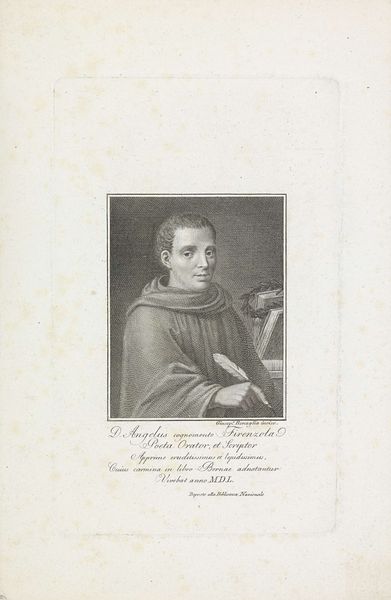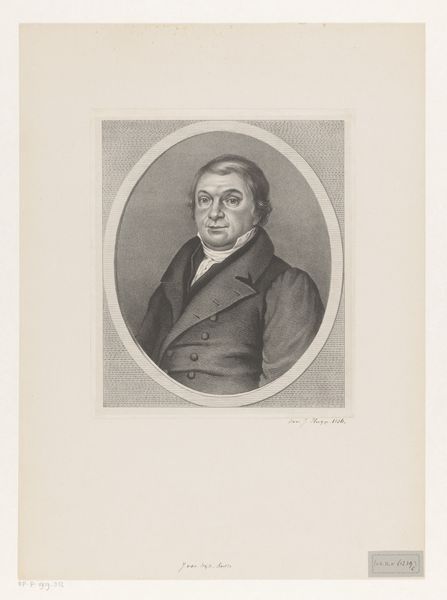
Dimensions: height 285 mm, width 197 mm
Copyright: Rijks Museum: Open Domain
Curator: Before us, we have "Portret van Martin Luther," created by Johann Georg Nordheim between 1852 and 1856. This work, a print made using engraving techniques, captures a somber image. Editor: Somber is right. The gray palette lends a weightiness. You can almost smell the aged paper. I wonder about the physical labor of crafting this engraving, the hours spent etching those lines into the plate. Curator: Indeed, the process is fascinating. And when looking at the symbol, consider that book in his hand, it's no mere prop. It represents the core of his teachings, the scriptures themselves, and the then-radical idea of making them accessible to the common person. His gaze is fixed upward with resolute defiance. Editor: Yes, the positioning and craftsmanship emphasize its importance. We can appreciate the detailed, meticulous strokes that define Luther’s robes and facial features. The collar, made of detailed tiny lace. It elevates the status, but also is meant to show he comes from means. Curator: And his clothing is equally important. The garments he dons indicate he is a man of status and authority, even while it suggests solemnity through its colors. This carefully crafted image was clearly designed to carry symbolic weight within a culture undergoing significant upheaval. Editor: It is hard not to read the image now without thinking about production; from this piece onward the print can be made endlessly. And for how long it remains and circulates can change society just like his cause. Curator: A relevant and salient point, even 150 years on. By connecting those material choices and techniques to the religious and social contexts of the time, you've provided an expanded awareness of this very potent historical portrait. Editor: Yes, thinking of it through production makes a point about his history more interesting.
Comments
No comments
Be the first to comment and join the conversation on the ultimate creative platform.
